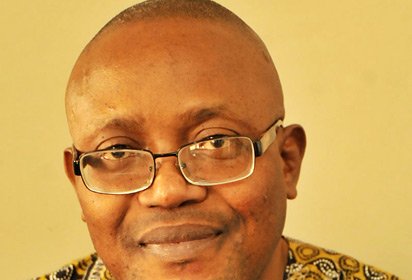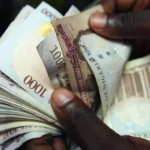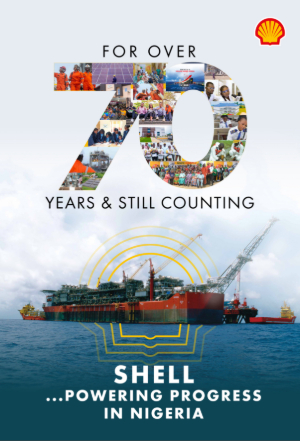Opinion: The African Road to China, By Owei Lakemfa
Articles/Opinion, Featured, Featured Contributors/Columnists, Latest Headlines Friday, August 24th, 2018
(AFRICAN EXAMINER) – The African leaders journey to Beijing, for the Forum on China-Africa Cooperation (FOCAC) holding from September 3-4, 2018, actually began fifty three years ago. That was at the infancy of our independence. In 1960 alone, seventeen African countries had gained independence. Tanzania became independent in 1961 and Zambia, four years later. Both faced the same challenge of development, lifting Africans out of poverty, and the underdevelopment foisted on them by colonialism. Also quite challenging to both countries, were the African liberation wars especially in Zimbabwe, Namibia, South Africa and Mozambique; colonies being run by the racists in Salisbury (Harare) the apostles of Apartheid in Pretoria and Portuguese colonialists in Maputo. Newly emergent Zambia shared borders with all these countries, so it was quite vulnerable. Worse still, as a landlocked country, its economy including its exports and imports depended on the racist and Apartheid regimes. The liberation-minded Presidents Mwalimu Julius Nyerere of Tanzania and Kenneth Kaunda of Zambia knew their countries must play frontline roles in the decolonization and liberation process in those countries, and concluded that a railway line linking both countries, was an economic and political necessity.
They turned to the European countries beginning with Britain to assist with the railway construction. They were turned down as did the then Soviet Union. Then, China was also an underdeveloped country, but out of frustration, Nyerere during his February 1965 visit to China, raised the issue and surprisingly, China committed itself. In a follow up visit by Kaunda in June 1967, China agreed to the construction. Then Chinese leader, Chairman Mao Tse-Tung said given the need for total African liberation and African development, China would build the railway even when it meant his country suspending some of its own development projects.
Three months later, the three countries signed the agreement for the 1,860 kilometre Dar es Salaam to Kapri Mposhi (Zambia)railway. The survey and design which began in May, 1968 took nine months and involved technicians and staff, walking from Tanzania to Zambia. It was funded by an interest-free loan of 988 million RMB Yuan from China. The technologically challenging construction which began in October 1970, was across some of the most difficult terrains on earth spanning valleys, drifting sands, rivers, the Udzungwa Mountains, the Mbeya Plateau and dense, virgin forests full of wild animals including lions and elephants. It required the construction of 320 bridges, 22 tunnels and 93 stations. Over 50,000 people worked on the construction including 16,000 Chinese and, its total cost was $500 million. Most significantly, it cost the lives of 64 Chinese and 96 African workers. The first Chinese casualty was Mr. Zang Mincai who was stung by bees in the forest. So involved was the Chinese leadership, that its famous Premier, Zhou Enlai sent top Chinese professor, Wu Jieping to treat Mincai, but he passed on; a martyr to African-Chinese friendship (Rafikir in Swahili). The Chinese casualties were buried on African soil, in Gongo la Mboto, near Dar.
The construction was completed in July 1976. Thus was born the Tanzania-Zambia Railway line better known as TAZARA or the Great Uhuru Highway. Uhuru in Swahili means freedom; that was how Zambia, Tanzania and much of Africa saw the rail project. Previously, railways had been built in some Africa countries but they were primarily by the colonialists, to move looted African raw materials and cash crops from the hinterland to the ports for shipment to Europe and America. In contrast, the TAZARA was built on commitment and solidarity. It was an ode to African-Chinese friendship, signed with the mixed blood of Chinese and African labour.
The TAZARA is also the signpost to next month’s China-Africa Cooperation Summit built around the Silk Road Economic Belt and the 21st-Century Maritime Silk Road(Belt and Road) project between China and Africa, the United Nations 2030 Agenda for Sustainable Development and the Agenda 2063 of the African Union.
Not unexpectedly, railway development remains a major component of Chinese cooperation with Africa. A TAZARA-like project, is the 754-kilometre Addis Ababa-Djibouti standard gauge line which links landlocked Ethiopia with the Djibouti port of Doraleh. Opened on January 1, 2018, 95 percent of Ethiopia’s trade passes that corridor while the latter, accounts for 70 percent of activities at the Djibouti port.
Much of the Nigeria-China development projects are also railway-based. The Chinese-built Abuja-Kaduna Railway was opened in July 2016, the Abuja Rail Mass Transit was opened in July, 2018 while the Lagos-Ibadan rail is on-going. The Chinese are also building the Lekki Deep Water Port in Lagos and expanding the Nnamdi Azikiwe International Airport in Abuja. A major step in Nigeria-China relations is the Naira-RMB currency swop which enables both countries bypass the internationally-dominant American dollar.
For the 2018 FOCAC Summit with the theme “China and Africa: Towards An Even Stronger Community With A Shared Future Through Win-Win Cooperation” Nigeria’s focus include the construction of the 614 kilometre Ajaokuta-Kaduna-Kano (AKK) pipeline project designed to enable gas flow from the East, West and North. It has a projected 24-month construction period.
Doubtlessly, the FOCAC has been quite beneficial, but Africa can get a better mileage by collectively coordinating its activities with China rather than engage mainly in individual negotiations. Africa should also be China-like in transforming from dependency to self-sustenance. For instance, the African technicians and workers who were fully involved in the construction of the TAZARA, should have been built into the nucleus of a railway construction and development movement in Africa; that is what China would have done had it been in our shoes.
African leaders also need to learn from the Chinese elite who are focused, programmatic, result-oriented, patriotic, people-centred and for whom generally, the law is no respecter of status, beliefs or origins. Also, we need to learn from China which concentrates on programmes and projects that benefits the most people such that it lifted 700 million Chinese out of poverty within a short period making it the world’s model. Also, unlike the West, China is not domineering and overbearing; it does not decree that its enemies must be our enemies; it does not ask its allies to join its turf battles. In contrast, when the Americans are fighting other countries such as its on-going dispute with Turkey and Iran, it insist that other countries join its economic sanctions, or be punished. China also teaches Africa that human circumstances and the world order can be changed not by threats, but in practice; its fundamental role in building the BRICS and its Silk and Road coalition are in practice, laying for a New Economic World Order. Unlike our colonial and neo-colonial experience, the Chinese have taught us that a candle does not lose its brightness by lighting other candles, rather, it makes the world brighter.
Related Posts
Short URL: https://www.africanexaminer.com/?p=45584






















